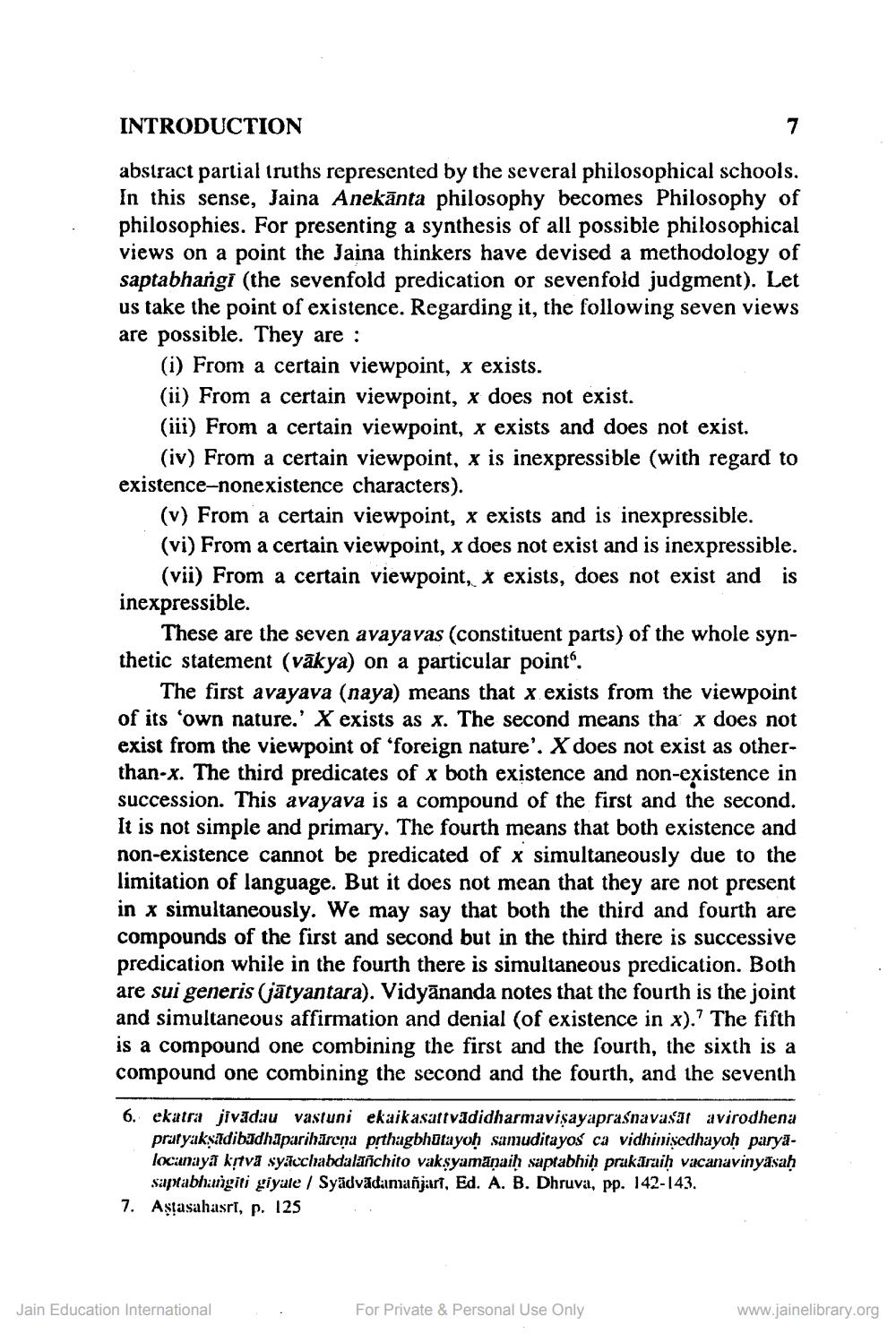Book Title: Aptamimansa Critique of an Authority Bhasya Author(s): Samantbhadracharya, Akalankadev, Nagin J Shah Publisher: Jagruti Dilip Sheth Dr View full book textPage 8
________________ INTRODUCTION abstract partial truths represented by the several philosophical schools. In this sense, Jaina Anekānta philosophy becomes Philosophy of philosophies. For presenting a synthesis of all possible philosophical views on a point the Jaina thinkers have devised a methodology of saptabhangi (the sevenfold predication or sevenfold judgment). Let us take the point of existence. Regarding it, the following seven views are possible. They are : (i) From a certain viewpoint, x exists. (ii) From a certain viewpoint, x does not exist. (iii) From a certain viewpoint, x exists and does not exist. (iv) From a certain viewpoint, x is inexpressible (with regard to existence-nonexistence characters). (v) From a certain viewpoint, x exists and is inexpressible. (vi) From a certain viewpoint, x does not exist and is inexpressible. (vii) From a certain viewpoint, * exists, does not exist and is inexpressible. These are the seven avayavas (constituent parts) of the whole synthetic statement (vākya) on a particular point“. The first avayava (naya) means that x.exists from the viewpoint of its ‘own nature.' X exists as x. The second means tha x does not exist from the viewpoint of 'foreign nature'. X does not exist as otherthan-x. The third predicates of x both existence and non-existence in succession. This avayava is a compound of the first and the second. It is not simple and primary. The fourth means that both existence and non-existence cannot be predicated of x simultaneously due to the limitation of language. But it does not mean that they are not present in x simultaneously. We may say that both the third and fourth are compounds of the first and second but in the third there is successive predication while in the fourth there is simultaneous predication. Both are sui generis (jātyantara). Vidyānanda notes that the fourth is the joint and simultaneous affirmation and denial (of existence in x). The fifth is a compound one combining the first and the fourth, the sixth is a compound one combining the second and the fourth, and the seventh 6. ekatra jivādau vastuni ekaikasattvadidharmavisayaprasnavasat avirodhena prutyaksadibudhaparibāreņa prthagbhutayoh samuditayos ca vidhinisedhayoh paryalocanaya kitva syacchabdalañchito vaksyamanaih saptabhiḥ prakāraih vacanavinyasah saprabhangiti giyle / Syadvādamañjart, Ed. A. B. Dhruva, pp. 142-143. 7. Astasahasri, p. 125 Jain Education International For Private & Personal Use Only www.jainelibrary.orgPage Navigation
1 ... 6 7 8 9 10 11 12 13 14 15 16 17 18 19 20 21 22 23 24 25 26 27 28 29 30 31 32 33 34 35 36 37 38 39 40 41 42 43 44 45 46 47 48 49 50 51 52 53 54 55 56 57 58 59 60 61 62 63 64 65 66 67 68 69 70 71 72 73 74 75 76 77 78 79 80 81 82 ... 140
